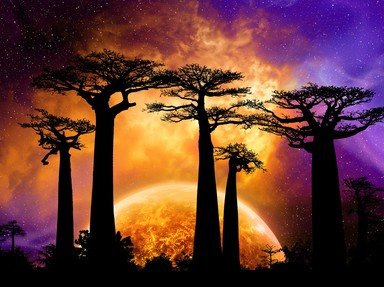Quiz Answer Key and Fun Facts
1. Word 1: Odontology.
It is the study of everything related to teeth.
Which of the following branches of science utilizes this to identify a person?
2. Word 2: Otorhinolaryngologist.
This word is used for a person who specialises in the branch of science, more specifically medicine, that deals with the diagnosis and treatment of conditions related to the head and neck, especially the ear, nose and throat.
For which of the following diseases would a patient come to this type of doctor?
3. Word 3: Oropendola.
It is a type of species of a form of life (living thing).
All the following branches of science deal with the study of some living being. Which of the following branches of science would deal with this organism, the oropendola?
4. Word 4: Oximes.
These are chemical compounds that contain carbon and nitrogen and belong to the group of imines. They have many derivatives. Dimethylglyoxime is one such derivative.
This derivative is predominantly used in the analysis of a certain chemical entity that comes under which branch of science? (Hint: money)
5. Word 5: Obsidian.
It is a type of naturally occurring material and forms over a period of time.
Which of the following branches of science would somebody be practicing if he/she was studying this material?
6. Words 6: Okazaki fragments.
Okazaki fragments are small fragments from a certain structure that Watson and Crick are often credited with establishing.
Which branch of science do these fragments come under?
7. Words 7: ”pera de Arame.
This is a theatre that is a famous tourist attraction in Curitiba, Brazil. The mind behind it is noted to be Domingos Bongestabs. Other people who share the same profession as Dominigos are Zaha Hadid, Bjarke Ingels and Steven Holl.
What branch of science do you think links the theatre and Dominigos?
8. Words 8: ÷rjan Ouchterlony.
He is credited with identifying an important method in the branch of science called microbiology. This technique he pioneered is called the Ouchterlony double immunodiffusion method.
This technique can be used for the detection of which of the following entities?
9. Words 9: Oort cloud.
This is hypothesized to be a cloudy structure containing icy particles and surrounds the solar system. It is said to be the origin of some comets. It is named after astronomer Jan Oort, whose contributions to the branch of science called astronomy are very significant.
Which one of the following is his contribution to astronomy?
10. Word 10: Orthopterology.
This is a branch of science. Which of the following things would be studied under this heading?
Source: Author
Saleo
This quiz was reviewed by FunTrivia editor
CellarDoor before going online.
Any errors found in FunTrivia content are routinely corrected through our feedback system.

